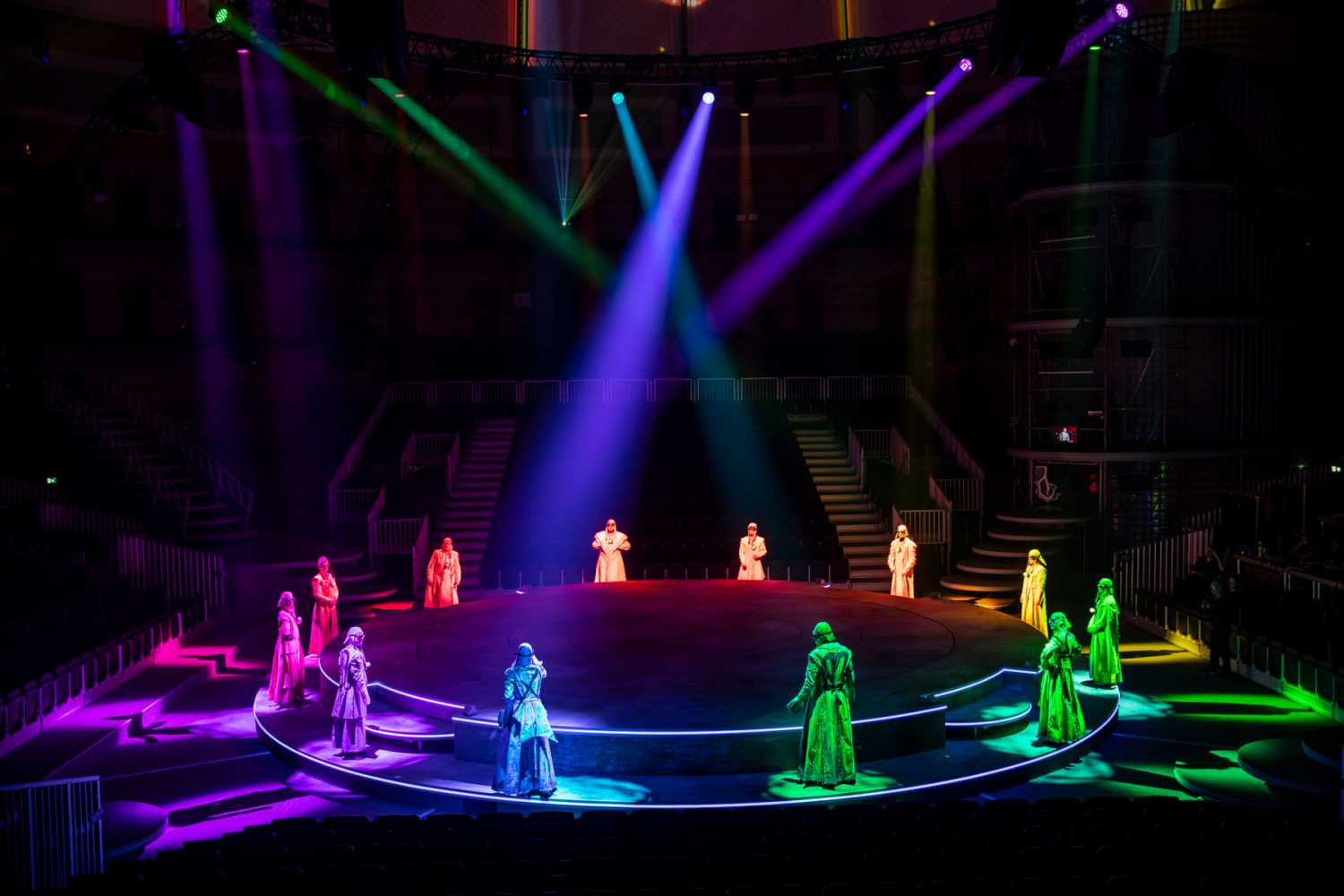Robe T2 Profiles imprisoned for Zodiac the Musical
- Details

Lighting designer Marc Heinz was among a team working under the technical production umbrella of Unlimited Productions – also based in Breda – helping to deliver this new work.
He and technical production manager Michiel van der Zijde – representing Unlimited Productions together with Jeffrey Kranen and Luc Huisman – also designed the set, and Marc specified 32 of Robe’s recently launched new T2 Profile fixture for the project, together with 50 x Robe Spiider LED wash beams and assorted other lighting fixtures.
Marc and his assistant designer Jordy Veenstra, Michiel and the entire production team were delighted to be back working on a show after a long break due to the pandemic, and particularly in such a special space.
The prison was designed by Johan Fredrik Metzelaar and opened in 1886 based on a panopticon design, whereby the activities of four stories of cells could be observed by a minimal contingent of guards stationed in the centre. The Koepelgevangenis complex was designated a national monument in 2001 and housed a women's prison until 2013 before closing completely two years later. Since 2018, it has been temporarily used as an event space, waiting for a new owner and a renovation plan.
Peet Nieuwenhuijsen needed a circular venue for his concept to work – which included spectacular projections onto a domed ceiling – and had initially staged an exploratory show in 2019 at the Planetarium Amsterdam.
The venue was already selected before the pandemic intervened. Pre-production started in August 2020, with the original plan to start the setup / get-in on the 15th of February 2021. Covid-19, despite its massive disruption worldwide, only delayed this overall plan by six weeks as the get in started on 1 April.
The storyline – stage play by Dick van den Heuvel with dramaturgy by Pieter van de Waterbeemd – evoked surveillance society with constant Orwellian monitoring. Thirty-eight LED screens dotted around the upper levels are a metaphor for big data recording and crunching, with over 70 drones – provided by Dronisos from France – joining the cast as a reminder that shady, anonymous governmental institutions shrouded in secrecy and subversion are in control. The faceless technicians running these operations are sealed behind closed doors in the shower tower.
After much mind mapping, Michiel, Marc and Ruud de Deugd (head rigger and production structural engineer) produced the elegant eight curved leg spider-like ground support structure design which connects to a 15m diameter circular truss in the middle positioned 12m above the central performance. This provides close lighting positions for the main performance space which is 14m in diameter complete with a double revolve stage.
The stage stays bare aside from a few props throughout the entire performance, putting huge emphasis on the cast and lighting to get the energy ramped up and the strong emotional impact of the piece across.
Front light was another enigma as it needed to be rigged around the cell tiers, and after a test revealed that the fourth floor was the optimum position, Marc auditioned several moving lights for this part including the Robe T2s, which were still a prototype at this time, but he chose it as his preferred profile to throw high-quality light the long distance from there to centre stage.
Robe’s distributor Controllux then pulled out all the stops to ensure that lighting supplier Events Light, also close to Breda, received the fixtures in time for the get in.
Twenty T2s are fixed to the steel beams around the main interior wall, each individually attached to the building by rope access riggers. A rope sits next to each light so it can be lowered for service. The other 12 x T2 Profiles are on the top circle of the spider ground support, positioned for closer front lighting.
Twenty-two of the Spiiders are on the spider (ground support) structure. These and the T2s also on there are accessed via a person lift as it is fully loaded with lights, so no climbing is possible. Access for getting the lift in position was also a consideration when positioning the seating and staging.
Sixteen Spiiders are attached to the balcony around the third level of cells, used for washing the venue’s dome and supporting the projections, with the final 12 on the top circular truss right up on the roof.
All 92 moving lights – including all the T2 Profiles and Spiiders – are working in conjunction with a Follow Me automated followspot system which is at the heart of the design, and this ensures that all the main characters in this very busy and fast-paced show always have the right lights trained on them, even when they are rotating on the revolve rings, which is essential for helping to unravel the convoluted plot.
All the show’s lighting is being supplied by Events Light, who were among the first in Europe to receive the T2 Profile.
Lighting control is via a Road Hog Full Boar console programmed by Jasper Nijholt. Projectors and media servers were programmed by Ruben Boogaard, and since the show premiered on 5 July, both lights and video are being operated by Pascal Schutijser. It is a mix of timecode for the large production numbers, but mostly manually operated lighting cues according to visual line-of-sight.
Audio is designed by Jeroen ten Brinke. The video design is by Arjen Klerkx and content created by Anouk Steenbakkers and Joost Gulien.
















